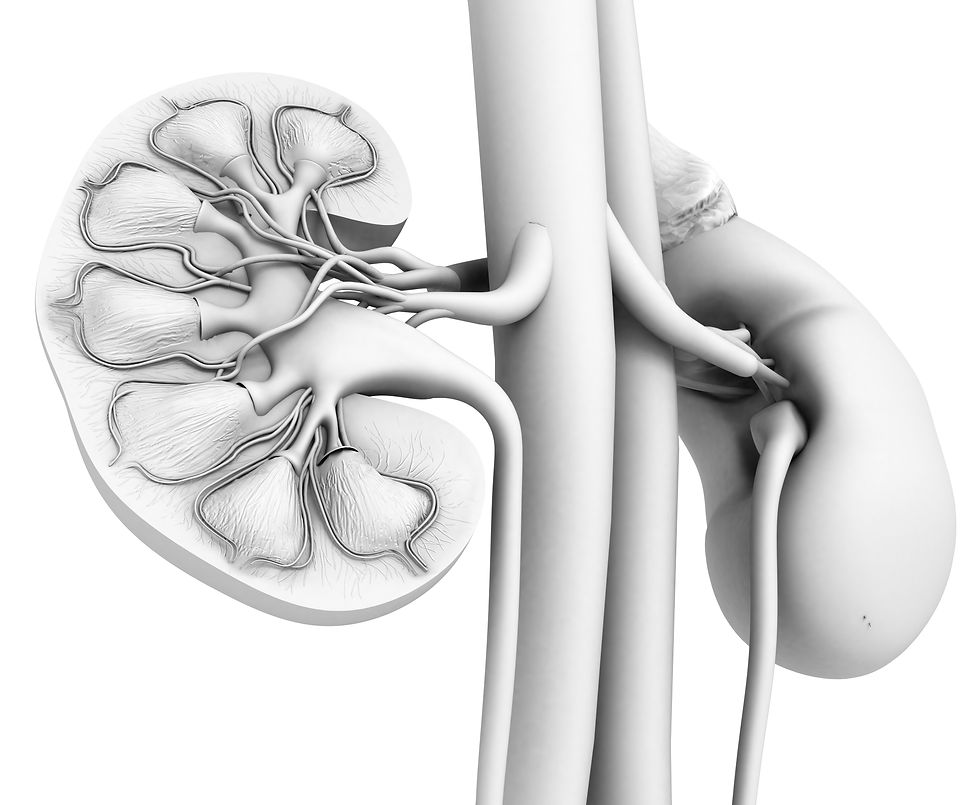Cardiovascular Disorders in Companion Animals
- Dr Andrew Matole, BVetMed, MSc

- Jul 13
- 4 min read
Updated: Sep 16
Introduction to Pet Cardiovascular Disorders
At The Andys Veterinary Clinic, we care deeply about your pet’s heart health. Like humans, cardiovascular disorders affect companion animals, including dogs and cats. These conditions can stem from various issues, which can lead to serious consequences if left untreated. They may be classified as congenital (present at birth) or acquired (developing later in life). Causes often include genetic predisposition, infections, age-related degeneration, endocrine (hormonal) abnormalities, or lifestyle influences, such as diet and physical activity (Ettinger & Feldman, 2017).

Common Cardiovascular Disorders in Pets
1. Congenital Heart Diseases
Congenital heart diseases can appear both in dogs and cats. Here are a few prevalent conditions:
Patent Ductus Arteriosus (PDA) occurs when a fetal blood vessel remains open after birth. This leads to abnormal blood flow, causing lung congestion and putting extra strain on the heart (Bonagura & Twedt, 2013; Ettinger & Feldman, 2017). Symptoms may include rapid breathing, coughing, or poor growth. Early diagnosis through echocardiography can lead to effective surgical treatment with favorable outcomes.
Ventricular Septal Defect (VSD) is characterized by an opening in the wall separating the heart's lower chambers. This defect allows a mix of oxygen-rich and oxygen-poor blood, leading to inefficient circulation and lung overload (Bonagura & Twedt, 2013; Ettinger & Feldman, 2017). Diagnosing VSD usually involves echocardiography. Some small defects may close spontaneously, while larger defects might need intervention.
Pulmonic and Aortic Stenosis involve narrowing of the heart's outflow valves, making blood flow difficult. This can lead to significant heart strain and increase the risk of heart failure. Diagnosis is often confirmed through echocardiography. Treatments may include balloon valvuloplasty or medications to manage symptoms.

2. Acquired Heart Diseases
Chronic Valvular Heart Disease (CVHD)
This is the most common acquired heart disease seen in dogs, particularly in small breeds. CVHD results in valvular insufficiency, often leading to congestive heart failure when unmanaged.
Symptoms include:
Heart murmur
Exercise intolerance
Coughing, especially at night
Weight loss in advanced cases
Early detection through auscultation, radiographs, and echocardiography is essential. Treatment may involve a combination of medications tailored for individual pets.
Dilated Cardiomyopathy (DCM)
Primarily affecting medium to large breed dogs, DCM results in a weakened heart muscle that can lead to congestive heart failure and sudden death (Ettinger & Feldman, 2017). Key clinical signs include coughing, labored breathing, and fainting. Diagnosis is confirmed by echocardiography, ECG, and chest radiographs. Treatment typically focuses on improving heart function and managing congestive heart failure symptoms.
Hypertrophic Cardiomyopathy (HCM)
Common in cats, HCM leads to thickening of the heart muscle, which can result in diastolic dysfunction. Symptoms may range from none at all to sudden cardiac events. Diagnosis is confirmed by echocardiography. Treatment aims to improve the heart's function and reduce symptoms.
Lifestyle Factors and Heart Health
Though genetics play a key role, lifestyle factors also influence cardiovascular health:
Obesity increases strain on the heart, becoming a risk factor for hypertension.
Diet is crucial; deficiencies in essential nutrients, such as taurine in cats, can lead to serious heart issues (Freeman et al., 2018).
Lack of physical activity may worsen cardiovascular fitness, thus affecting overall heart health.

Conclusion
Cardiovascular disorders in pets are diverse and can pose serious health risks for animals. A clear distinction between heart disease, heart failure, and hypertension is vital for effective management. Additionally, understanding the impact of lifestyle factors, such as diet and exercise, is indispensable for preventing these disorders.
References
Acierno, M. J., et al. (2018). ACVIM consensus statement: Guidelines for the diagnosis and treatment of systemic hypertension in dogs and cats. Journal of Veterinary Internal Medicine, 32(6), 1803–1822.
Atkins, C., Bonagura, J., Ettinger, S., et al. (2009). Guidelines for the Diagnosis and Treatment of Canine Chronic Valvular Heart Disease. Journal of Veterinary Internal Medicine, 23(6), 1142–1150. https://doi.org/10.1111/j.1939-1676.2009.0392.x
Buchanan, J. W. (2001). Patent ductus arteriosus: morphology and morphogenesis. Journal of Veterinary Cardiology, 3(1), 7–16. https://doi.org/10.1016/S1760-2734(06)70020-070020-0)
Bonagura, J. D., & Twedt, D. C. (2013). Kirk’s Current Veterinary Therapy XV. Elsevier.
Boswood, A., et al. (2016). Effect of pimobendan in dogs with preclinical myxomatous mitral valve disease and cardiomegaly: The EPIC study. Journal of Veterinary Internal Medicine, 30(6), 1765–1779.
Brown, S., Atkins, C., Bagley, R., et al. (2007). Guidelines for the Identification, Evaluation, and Management of Systemic Hypertension in Dogs and Cats. Journal of Veterinary Internal Medicine, 21(3), 542–558. https://doi.org/10.1111/j.1939-1676.2007.tb03005.x
Ettinger, S. J., & Feldman, E. C. (2017). Textbook of Veterinary Internal Medicine (8th ed.). Elsevier.
Fox, P. R. (2003). Hypertrophic Cardiomyopathy: Diagnosis and Management. Clinical Techniques in Small Animal Practice, 18(2), 77–86.
Freeman, L. M., Rush, J. E., et al. (2018). Diet-associated Dilated Cardiomyopathy in Dogs: What Do We Know?Journal of the American Veterinary Medical Association, 253(11), 1390–1394.https://doi.org/10.2460/javma.253.11.1390
Fuentes, V. L., et al. (2003). Interventional therapy in canine congenital heart disease. Veterinary Clinics of North America: Small Animal Practice, 33(5), 1245–1274. https://doi.org/10.1016/S0195-5616(03)00061-200061-2)
Kittleson, M. D., & Kienle, R. D. (1998). Small Animal Cardiovascular Medicine. Mosby.
Oyama, M. A., Sisson, D. D., & Solter, P. F. (2007). Prospective evaluation of NT-proBNP in dogs with heart disease. Journal of Veterinary Internal Medicine, 21(2), 243–250.
Payne, J. R., Brodbelt, D. C., & Fuentes, V. L. (2015). Cardiomyopathy prevalence in 780 apparently healthy cats in rehoming centres (the CatScan study). Journal of Veterinary Cardiology, 17(S1), S244–S257.
Sleeper, M. M., Clifford, C. A., & Laster, L. L. (2001). Cardiac troponin I in dogs with doxorubicin-induced cardiomyopathy. Journal of Veterinary Internal Medicine, 15(6), 520–524.
Smith, S. A., Tobias, A. H., Jacob, K. A., Fine, D. M., & Grumbles, P. L. (2003). Arterial thromboembolism in cats: Acute crisis in 127 cases (1992–2001). Journal of Veterinary Internal Medicine, 17(1), 73–83.
Sykes, J. E. (2014). Canine and Feline Infectious Diseases. Elsevier.








Comments